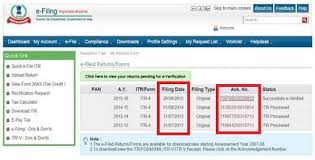In its endeavour to make the tax filing process completely online, the income-tax department added another facility recently. You can now e-file your revised return even if the original was filed manually or offline. The last date to file the revised return for financial year (FY) 2017-18 or assessment year (AY) 2018-19 is 31 March 2019. Here is when you can file a revised return and how.
When to file
If you discover any omission or wrong statement in the return you have filed, you are allowed to rectify such mistakes by filing a revised return under Section 139(5) of the Income-tax Act, 1961.
There can be various types of mistakes which can be rectified through a revised return such as omission or wrong reporting of any income or deductions, non-disclosure of assets and liabilities in case your overall income exceeds ₹50 lakh, non-disclosure of foreign income and foreign assets in the ITR, filing of wrong ITR form and so on.
The window to file a revised return is open till the end of the relevant AY or before the assessment of return by the tax department, whichever is earlier.
How to file
There is no separate form to file a revised return. You need to file it in the same form that you used to file the original return, unless you chose the wrong form then. Even the process of filing and method of verification for a revised return is the same. Simply enter the details again in the correct formats.
However, don’t forget to tick the space that specifies that it is a revised return. Also, mention the details of the original return such as date of filing and the 15-digit acknowledgement number. If the original return was filed offline and the acknowledgement number was less than 15 digits, while e-filing the revised return, suffix zeros at the end of the number to make it 15 digits. For instance, if the acknowledgement number was 198642864 in the original return, insert 198642864000000 while filing the revised return.
For more updates: Like us on Facebook and follow us on Twitter & Instagram





































